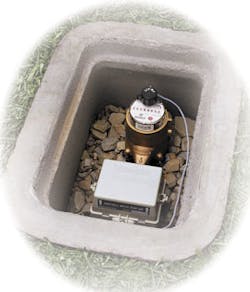Universal Metering: An Answer to California's Water Woes?
While water meters have been in use for decades in most California communities, they are not yet universal. More than 219,000 urban water connections remain unmetered in the State, according to a white paper from the Pacific Institute.
Additionally, the majority of multi-family units have a single meter for all units. Studies show that metering, when coupled with effective pricing structures, reduces water use by 15% to 20%.
Water savings from metering all connections in California can produce considerable water savings at the local level, reducing vulnerability to drought and other water supply constraints. Moreover, water savings in previous years would have been left in storage.
Despite the known benefits of water metering, there are barriers, the Institute said. For example, meter installation requires a large up-front investment, especially when existing infrastructure must be retrofitted to accommodate the new device. By the time the City of Sacramento completes its meter installation program, the city will have spent more than $416 million to install 110,000 meters and make other related infrastructure upgrades.
By using Automatic meter reading (AMR) and Advanced metering infrastructure (AMI), utilities can collect usage data every day, hour, or more frequently, resulting in a more accurate water bill and a more detailed understanding of a customer's water use patterns. They can also help to detect leaks.
A more recent California-based study showed that metering and volumetric rates reduced household water use by 0.24 m3/day in Bakersfield, 0.16 m3/day in Chico, and 0.06 m3/day in Visalia. Similarly, the City of Davis installed meters on nearly 10,000 homes and began a metered billing rate, effectively reducing per-capita water use by 18%.
The California legislature has recognised the importance of metering and has passed several bills requiring meters in California. In 1991, the legislature passed SB 229, requiring meters on new connections after 1992.
However, the legislation did not require utilities to actually read the meters or to use that data to bill customers by volume. In 2003, AB 514 required Central Valley Project water users to be fully metered by 2013 and start charging metered users volumetrically by 2010.
Then in 2004, AB 2572 closed the loophole in SB 229 by requiring urban water utilities to meter all municipal and industrial users by 2025 and charge metered customers based on the actual volume of water delivered. In 2009, the legislature passed similar requirements for California's investor-owned utilities.
California utilities have made considerable progress on metering in most areas, the Pacific Institute added. Fresno, for example, which had passed an amendment to the city charger prohibiting the reading of water meters for billing purposes for single family residential users, is now completely metered and charging customers based on their water use (City of Fresno 2014).
Some utilities, however, still have a way to go. According to data from the California Department of Water Resources (2014) and personal communication with utility staff and the Regional Water Authority, 39 water utilities have more than 219,000 unmetered connections. In these communities, unmetered connections account for 30% of all connections, on average. Of the unmetered connections in the state, 14% are in Sacramento County.
In addition, the majority of those living in multi-family units are not yet metered. According to the U.S. Census Bureau, roughly 12 million Californians live in multi-family housing. These residences account for approximately 31% of California's total housing units, higher than the national average of 26%.
A report prepared for the California Urban Water Conservation Council in 2006 estimated that submetering these residences would save about 0.09 m3/day per housing unit.
In 2010, the San Diego City Council passed an ordinance that requires submeters on all new multi-family residential and mixed-use developments with three or more units, as well as in existing buildings when interior water plumbing is being replaced.
This was an important move for the city to help reduce water demand, as multifamily units account for 44% of the housing units in the area. Other utilities incentivise submetering through rebates. East Bay Municipal Utility District, for example, offers a rebate to multi-family property owners of up to $250 per meter (East Bay MUD n.d.).
This article is based on Pacific Institute's White Paper entitled: Metering in California. More information can be found at: http://bit.ly/1uMT8Vw
More Water & WasteWater International Archives Issue Articles

